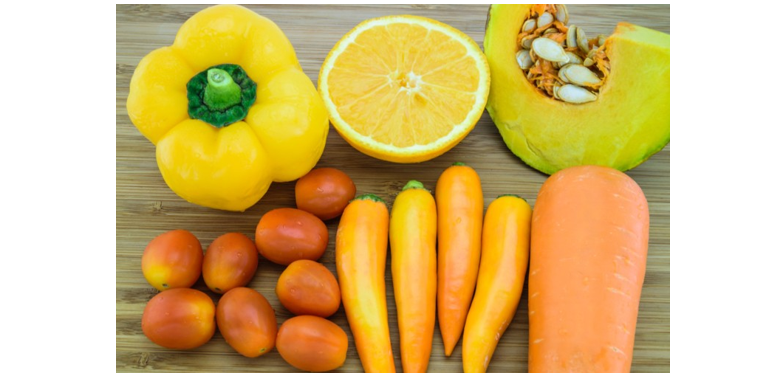What are carotenoids?
Carotenoids are yellow, orange-red, or red polyene substances that are widely present in nature. They were discovered in carrots, hence the name. The human body cannot synthesize carotenoids, so they are mainly obtained through food. Fruits and vegetables are the main food sources of carotenoids.
Carotenoids are composed of 8 isoprenoid units and can be divided into two categories: carotenes and xanthophylls based on their molecular composition. The former contains only two elements of hydrocarbons and hydrogen, while the latter is an oxygen-containing derivative of the former, containing one or more oxygen atoms to form hydroxyl, carbonyl, methoxy and epoxy compounds. The most important representatives of carotenoids are β-carotene, lycopene, lutein, zeaxanthin, astaxanthin and cantharidin.
The function of carotenoids
Provitamin A carotenoids can maintain visual function, promote cell division, improve immunity, and promote embryonic development.
Carotenoids have strong antioxidant activity, and have outstanding pharmacological and health-care effects on various diseases of the human body. Intake of vegetables and fruits high in carotenoids can reduce the incidence of cancer. Carotenoids can hinder lipid peroxidation, thereby protecting the steroid-producing cells of follicles and uterus from oxidation. Lycopene can reduce the incidence of coronary heart disease by inhibiting the oxidation of low-density lipoprotein cholesterol (LDL). Clinical studies have found that the intake of lutein can increase the pigment content of the macula and can improve the vision of patients with age-related macular degeneration (AMD). Lutein can also eliminate free radicals to prevent cataracts. β-carotene can inhibit the generation of fat peroxides in the skin and enhance the water retention and elasticity of the skin. Cantharidin can inhibit cholesterol-induced oxidative stress.
Carotenoid is an effective natural coloring agent, which has a good coloring function due to the special conjugated structure in the molecule. Their absorbed wavelength is between 400 to 550 nanometers, hence displaying the compounds as yellow, red, or orange. Carotenoid can coexist with potassium, zinc, calcium, and other elements without changing color.
Techniques for carotenoids analysis in food and human samples
Some characteristics of carotenoids, such as their presence in nature, varied concentrations, susceptibility to isomerization, and oxidation of highly unsaturated carotenoid, makes the quantification of individual carotenoids a challenging task. When analyzing carotenoids, precautions need to be taken to minimize isomerization, oxidation, and degradation.
There are two strategies to detect carotenoids and their metabolites: untargeted and targeted analysis.
Extraction methods: (According to the solubility and stability of various carotenoids in the extraction solvent to determine the specific method)
- Solid phase extraction (SPE)
- Liquid-liquid extraction
- Supercritical fluid extraction (SFE)
- Matrix solid-phase dispersion (MSPD)
- Saponification
Determination methods:
- UV/Visible spectophotometric methods
- High-performance liquid chromatography (This type of method is the preferred method for separation, identification and quantification of carotenoids in food and biological samples)
The most commonly used detector for analyzing HPLC carotenoid is the photodiode array (PDA), but detectors such as electrochemical detector (ECD), fluorescence detector, mass spectrometry detector (MS), and nuclear magnetic resonance (NMR) can also be used.
